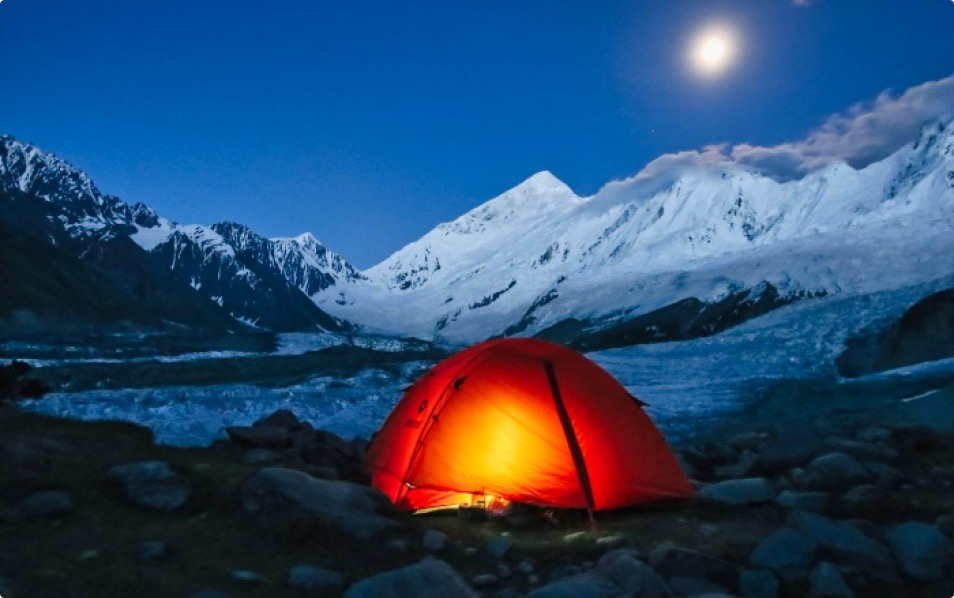Rakaposhi Base Camp Trek Tour Package 2024

The Rakaposhi Base Camp trek is a popular adventure hiking route in the Gilgit-Baltistan region in Northern Pakistan. It offers stunning views of the majestic Rakaposhi Peak, situated in the Karakoram Range, approximately 7,788 meters (25,551 feet) above sea level. The trek usually starts from the Minapin village near Nagar Valley. From here, trekkers begin their ascent towards Rakaposhi Base Camp. Some key features of Rakaposhi Pakistan include:
Climbing History: The first successful ascent was completed in 1958 by British expeditioners Mike Banks and Tom Patey.
Altitude and Difficulty: The Rakaposhi Base Camp tour involves gaining altitude gradually. It’s a moderately challenging trek suitable for trekkers with some experience in high-altitude trekking.
Camping and Accommodation: Trekkers usually stay in tents during the trek, as the route doesn’t have permanent lodges. They need to carry appropriate camping gear and supplies.
Best Time to Trek: The ideal time for the Rakaposhi Base Camp trek is during the summer months (June to September) when the weather is relatively stable and the trails are more accessible.
Duration: The trek typically takes around 5-7 days round trip, depending on the itinerary and pace.
Local Culture: The area around Rakaposhi is inhabited by diverse ethnic groups, including the local Balti and Burusho communities, whose rich culture and traditions add to the appeal of visiting the region.
Rawaan Paksitan, taking you on the Rakaposhi tour of 8 days through a well-planned package that is designed keeping in mind your comfort, joy, and adventure. Book Now
Location
- Islamabad
- Gilgit
- Minapin
- Hapakun
- Taghaphari
- Rakaposhi Base Camp
Highlights
- The trek offers breathtaking views of Rakaposhi and other nearby peaks like Diran Peak.
- You’ll pass through lush green valleys and alpine meadows.
- Witnessing several glaciers, including the famous Rakaposhi Glacier.
- En route to the base camp, you’ll view the fantastic Rakaposhi viewpoints.
- Stargazing on clear sky nights in Rakaposhi base camp.
- Experiencing wild animals such as marmots, ibex, and various bird species.
What’s Included
Comfortable and
Convenient Transport
Best
Accommodations for Stay
Delicious Meals
(Breakfast, Lunch and Dinner)
Licensed Professional
Tour Guides with Local Expertise
24/7
Assistance and Safety Ensured
- Drive from Islamabad to Gilgit
- Check into a hotel, rest, and acclimatize to the altitude
- Visit local bazaars and explore Gilgit city
- Depart from Gilgit after breakfast towards Minapin village
- Enjoy scenic views of the Nagar Valley during the drive
- Arrive in Minapin, check into a guesthouse, and prepare for the trek
- Start the trek from Minapin after an early breakfast
- Trek through lush green landscapes and small villages
- Reach Hapakun, a scenic campsite located at around 3,100 meters
- Set up camp, enjoy dinner, and rest for the night
- Begin trekking towards Taghaphari after breakfast
- Trek through alpine meadows with stunning views of Rakaposhi
- Cross glacial streams and ascend gradually to the Taghaphari campsite
- Settle in at the campsite, have dinner, and overnight stay
- 5th day trek takes you closer to Rakaposhi
- Ascend towards Rakaposhi Base Camp at around 3,800 meters
- Enjoy mesmerizing Rakaposhi viewpoints and its surrounding glaciers
- Set up camp near the base camp, relax, and soak in the mountain scenery
- Spend a day at Rakaposhi Base Camp
- Hike around the area for better views and photography opportunities
- Enjoy the serene ambiance of Rakaposhi
- Rest and get energized for the next day’s journey
- Descend back to Minapin village after breakfast
- Reach Minapin by late afternoon
- Drive back to Gilgit and check into your hotel
- Celebrate the completion of the trek and enjoy a well-deserved meal
- Depart from Gilgit to Islamabad and return home
Get Fit:
Make sure you’re physically ready for the trek by exercising regularly, like walking or jogging.
Take It Easy:
Before starting the trek, spend a few days in the area to get used to the high altitude. This helps prevent sickness.
Pack Smart:
Bring only what you need, such as comfortable clothes, good shoes, a sleeping bag, and a light backpack.
Be Ready for Weather:
Bring layers of clothing for warm and cool weather, plus a waterproof jacket in case it rains.
Stay Hydrated and Snack Well:
Drink plenty of water and bring snacks to keep your energy up during the trek.
Protect Yourself From The Sun:
Bring sunscreen, sunglasses, and a hat to shield yourself from the strong sun at higher altitudes.
Permits And Guides:
It’s advisable to obtain necessary trekking permits and hire experienced local guides or porters familiar with the terrain.
Respect Local Ways:
Be polite and ask before taking photos of people or their homes. Respect their customs and traditions.
Leave No Trace:
Keep the environment clean by carrying out trash and waste.
Be Prepared for Emergencies:
Bring a basic first aid kit and know what to do in case of altitude sickness or other emergencies.
Booking
Top Tours
FAQ'S
Proper preparation, including acclimatization, hiring a guide, and following safety guidelines, ensures the trek’s security and soundness. Stay updated on weather conditions and avoid risky areas.
Yes, it is recommended that you hire a local guide who knows the route well and can assist with navigation and carrying supplies. They also offer valuable insights into the local traditions and culture.
You will need trekking permits from the local authorities, which can be obtained in Gilgit or through your trekking agency. Ensure you have all the necessary documents before starting the trek.
If you experience symptoms of altitude sickness (headache, nausea, dizziness), descend to a lower altitude immediately, rest, and drink plenty of water. Keep your tour guide informed. Seek medical help if symptoms persist.


